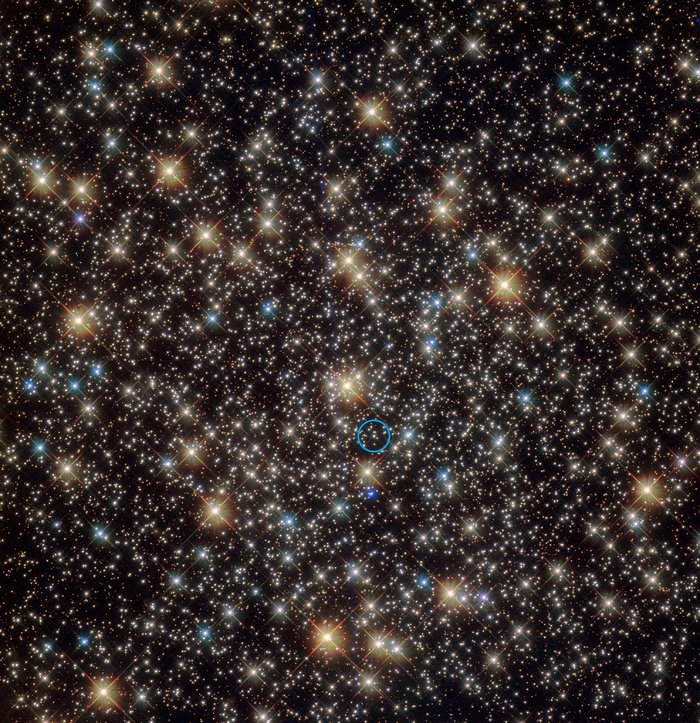This star's bizarre behavior helped astronomers find a hidden, invisible black hole in the Milky Way
The star was found orbiting a massive black hole with around four times the mass of the Sun.
Astronomers were able to find an invisible black hole hidden in a giant Milky Way globular star cluster, dubbed NGC 3201, thanks to one weirdly behaving star — located in the Vela constellation around 16,000 light years away.
Using the ESO's MUSE instrument on the Very Large Telescope in Chile, scientists discovered that the star was orbiting a massive black hole with around four times the mass of the Sun. The star was being "flung backwards and forwards" at several hundred thousand kilometer per hour speed, every 167 days.
"It was orbiting something that was completely invisible, which had a mass more than four times the Sun — this could only be a black hole! The first one found in a globular cluster by directly observing its gravitational pull," lead author of the new study, Benjamin Giesers, said in a statement.
Globular clusters are believed to be some of the oldest objects in the Universe and can usually contain millions of stars. These astronomical objects are thought to have formed during the early phase of the Big Bang, around the same time that the Milky Way Galaxy was formed.
The new discovery marks the first time that scientists have detected an inactive black hole at the heart of a globular cluster, which unlike active black holes, is neither swallowing matter up nor is surrounded by a glowing ring of gas.
Until recently, scientists believed that globular clusters that contained black holes likely did not exist. However, recent discoveries such as the detection of x-ray and radio signals from globular clusters, as well as the revelation that colliding black holes produce gravitational waves, suggest that relatively smaller black holes may be more commonly prevalent in globular clusters than previously thought.
"Until recently, it was assumed that almost all black holes would disappear from globular clusters after a short time and that systems like this should not even exist! But clearly this is not the case — our discovery is the first direct detection of the gravitational effects of a stellar-mass black hole in a globular cluster," Giesers said.
"This finding helps in understanding the formation of globular clusters and the evolution of black holes and binary systems — vital in the context of understanding gravitational wave sources."
The new research was presented in a paper titled "A detached stellar-mass black hole candidate in the globular cluster NGC 3201" in the journal Monthly Notices of the Royal Astronomical Society.











